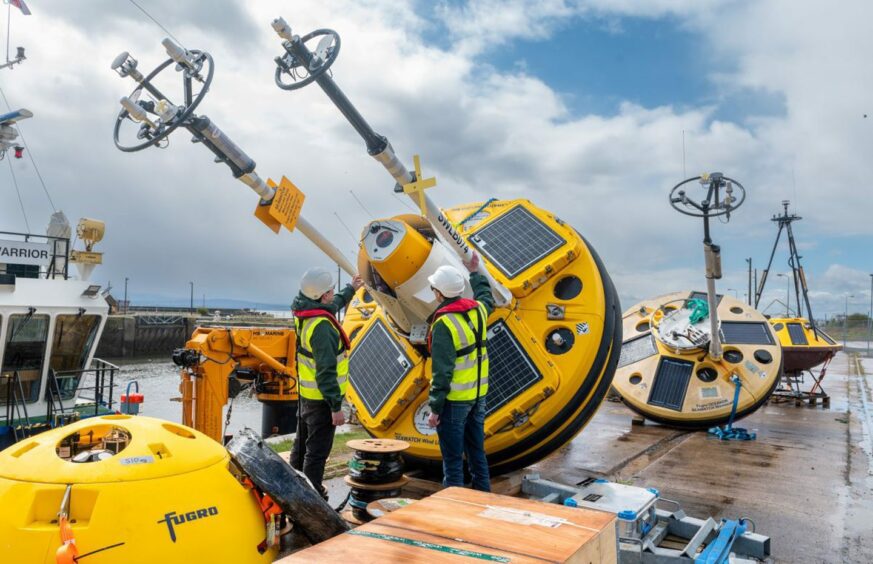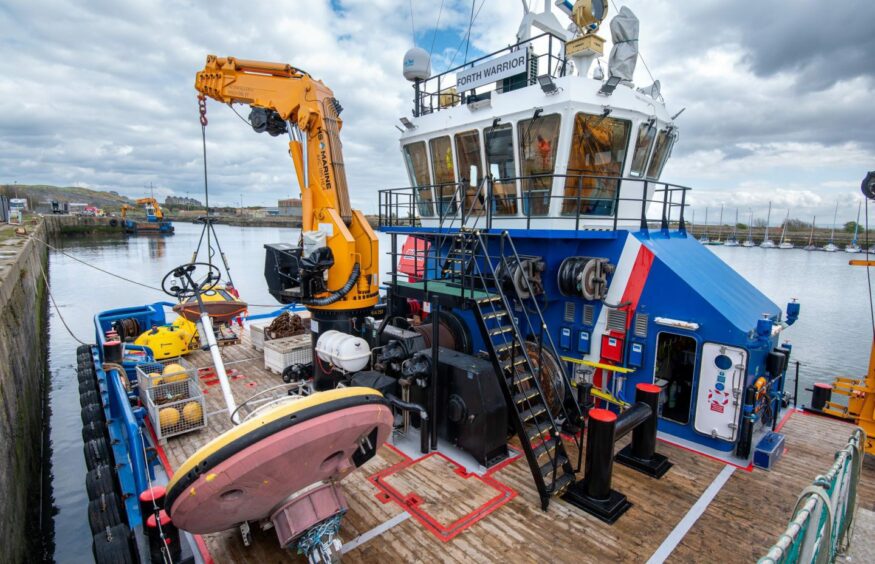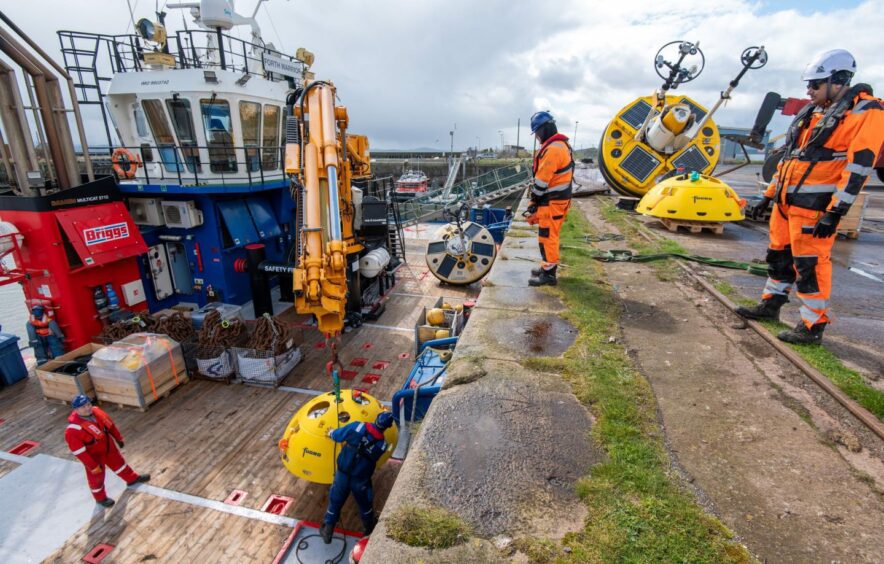
Metocean surveys are now underway in the area of ScottishPower Renewables’ MachairWind offshore windfarm, off the coast of Argyll.
For this work, Fugro has deployed floating LiDAR (light detection and ranging) buoy, met ocean buoys and seabed frames in the area of the fixed bottom wind farm.
Using the Fife-based Forth Warrior vessel, the equipment has been deployed at two separate locations and will be in place for a year, measuring wind speed, air and sea temperatures, current speeds and wave heights.
The project has been said to produce 2 GW of power when online and will mark ScottishPower Renewables’ first offshore wind farm in the region.
Further survey work is planned for later this year, with geophysical and environmental survey works expected to begin in the summer to gather data about the ground conditions on the seabed.
The is also work being done on a port feasibility study that will look into port facilities for the construction and operation and maintenance phases of the project.
In addition to this the firm behind MachairWind will conduct a socio-economic impact study that will assess potential impacts on employment and businesses, with the aim of maximising the socio-economic benefits from MachairWind for local communities.
ScottishPower Renewables’ senior project manager, Kiera Wilson, said: “Bringing an offshore windfarm to life involves a huge amount of detailed and technical work and the starting point has to be finding out all we can about the specifics of our project environment – both above and below the water.
“The metocean data collection that is now underway is an important part of that and will help build up a picture of the conditions our windfarm will need to operate in – whether spring, summer, autumn or winter.
“This data forms a vital piece of the jigsaw that will help shape our windfarm design, our operation and maintenance strategy, and also feed into our planning application as we work to deliver MachairWind and enough clean, green electricity to power the equivalent of more than two million homes.”



